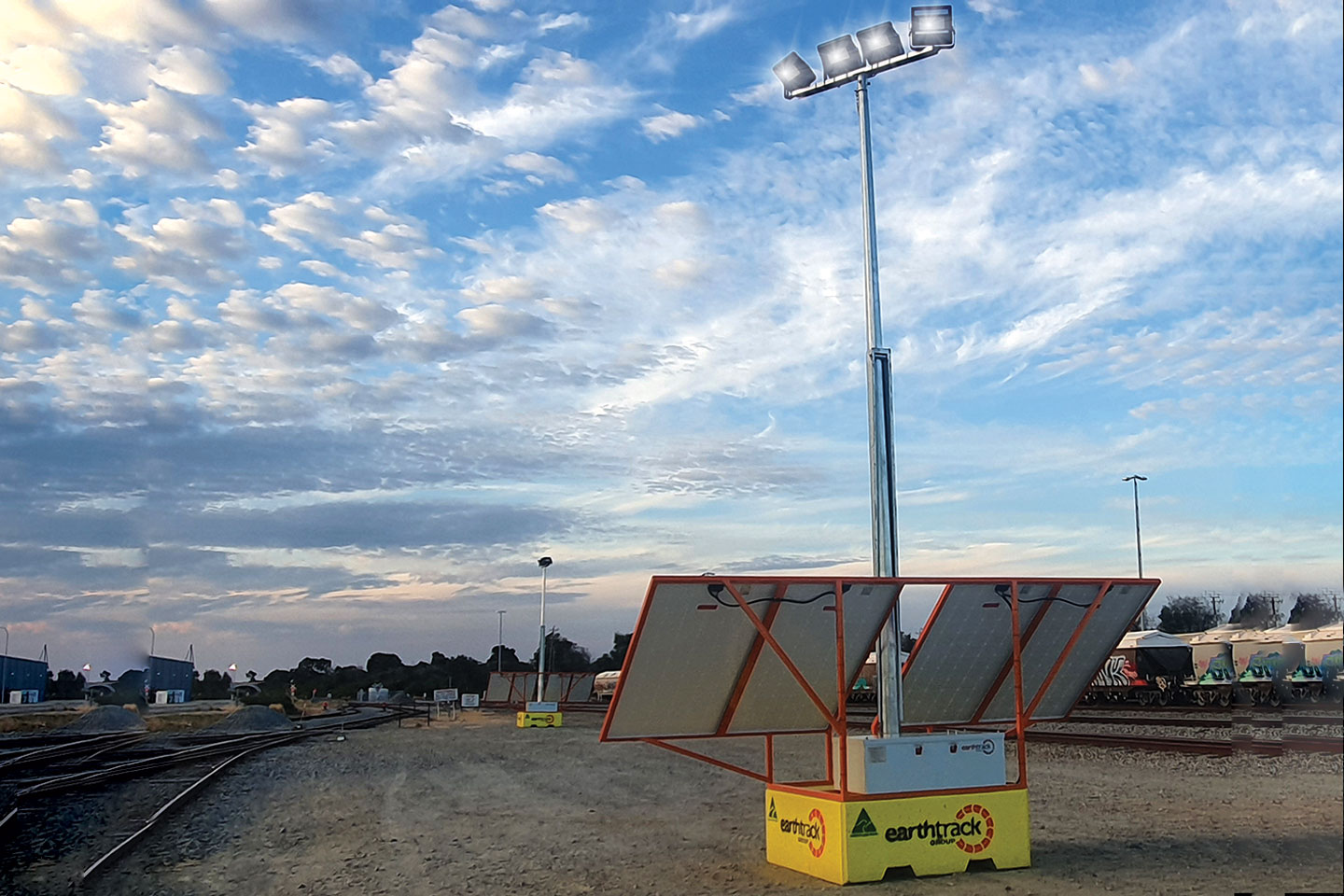

As the mining and construction sectors move toward safer and more ecological practices, businesses need to ensure their sites have adequate lighting for safety on site whilst reducing it’s impact on the environment. In recent years solar powered LED lighting has been in the spotlight as an alternative onsite solution to traditional electrical or diesel powered units for both environmental and financial reasons. Quieter and fume free solar lighting requires no trenching or cabling making it a more sustainable and affordable solution in times where labour and materials costs are sky rocketing.
Even with increased emissions and renewables targets currently on the agenda, ensuring the switch from traditional to cleaner lighting solutions doesn’t compromise safety and output is critical. A local Perth company Earthtrack Group has been working with industrial solar lighting for many years and know the factors that need to be addressed to ensure peak performance of solar luminaires.
“We know that solar options must be fit-for-purpose. If the sun isn’t shining for a few days, will the batteries store enough power for a few nights without recharging fully? Are the panels large enough to capture adequate sunlight? Will the unit stand up to harsh climatic conditions and high temperatures? Is there a lot of dust and debris that may impact on solar panel performance? We look at these factors and tailor the right lighting plan for each site” says Lawson Baker a sales executive for Earthtrack.
Along with these factors the type of luminaire selected can also make a difference to the outcomes of lighting efficiency on site. There are various beam angles on the market and using the correct one for an area or purpose will control lighting spill, directing it away from unneeded areas, and reducing glare. Generally wider beam angles are used for general flood lighting, while narrower angles are optimal for streets or pathways.
In environmentally sensitive areas, it is also recommended to switch to a turtle-friendly or amber chip in the luminaire to avoid light emissions that impact wildlife hatchery areas. Bluer lights tend to mimic moon light and cause confusion for hatchlings, so amber lighting can minimize the impact on wildlife and is proven to reduce any detrimental effects on natural habitats.

Even in the workshop, there are high bay lights specifically designed for high-temperature work environments or with an emergency battery backup. This means if there is any power disruption, your workers will still have adequate light to continue to safely operate. They can also operate with motion sensors to save power consumption by reducing or turning off the light when an area is not in use and automatically switching to full power mode when motion is detected.
Earthtrack also work with companies swapping out old halide fittings for LED. There are clear advantages to doing this, both economically and environmentally, as they use a minimum amount of power and produce brighter light compared to halide lights. Where a traditional halide bulb lasts around 3 to 4 years with normal use, LED has an extremely long life with some fittings lasting more than 100,000 hours, or 10 years with very little maintenance needed. LED technology also makes efficient use of every watt of electricity used, which can be seen by the lumen per watt calculation of a LED light’s specifications; for example, 140 lm/w is more efficient than a fitting providing 100 lm/w. In fact, LED technology is one of the most ecologically efficient lighting systems in the world.
For efficiency It is recommended that work sites have a periodical lighting review to ensure all lighting is working optimally and to required standards. A report will also provide details on ways to lessen a site’s lighting energy use to help reach emissions targets while increasing site safety and security.
By switching a site over to solar lighting it can help towards emission targets while helping to reduce running costs. Earthtrack are committed to helping companies make smarter choices to improve safety and energy efficiency on-site through innovative lighting solutions.











